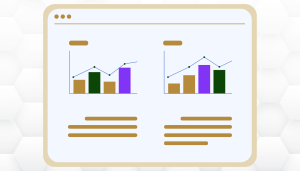
Share
10 Ways McKinsey Predicts Consumer Behavior Will Forever Change Post-Pandemic
When McKinsey Consulting puts out a report like this one from a few weeks ago, major companies and budding entrepreneurs alike pay attention.
They’ve gathered a reputation over decades as a destination for some of the smartest minds in the world, focused on figuring out the hardest business problems. They’re especially skilled in taking data and projecting trends and behaviors from the market at large.
There’s no doubt we’ve experienced big sweeping changes in how our world operates, but there are still more opportunities for brands large and small to position themselves adequately for our “new normal” we keep hearing about.
Our goal with this piece is to look from the lens of affiliate marketing (but also marketing and sales in general) and pinpoint clear ways to gear up in our ever-changing digital economy.
Some of the points made will feel like common sense, but others may surprise you. Either way, all are useful for any merchant looking to amplify their presence in the digital marketplace.
So, let’s begin. In the pandemic, we’ve come across five large themes representing ways consumers have responded to stay-at-home orders that McKinsey predicts will stick.
Those are:
- Flight to online
- Shock to loyalty
- Need for hygiene transparency
- Back to basics and value
- Rise of the homebody economy
We’ll dive deeper into all five, and I’ll be mentioning them amongst 10 clear and specific big changes we expect to see, even once coronavirus is somehow, some way in our rearview.
Let’s start with the flight to online:
1. Digital shopping is here to stay
This is arguably the most obvious piece that McKinsey mentions first. Of course, there has been a major push for digital shopping rather than visiting brick and mortar locations. This is in most part due to the pandemic.
However, McKinsey and many others believe the newfound reliance on digital shopping will last even after the Coronavirus is under control.
Categories where expected growth in online shoppers exceeds 35 percent include essentials such as over-the-counter (OTC) medicine, groceries, household supplies, and personal-care products.
Even discretionary categories such as skin care and makeup, apparel, and jewelry and accessories show expected customer growth of more than 15 percent.
2. Millennials and high-income earners are in the lead when it comes to shopping online
McKinsey believes that while the shift to online shopping has been near universal across categories, high-income earners and millennials are leading the way in shifting spend online across both essential and nonessential items.
Gen X has experienced a similar online shift, although not at the same scale as millennials. Gen Z has concentrated its shift online in particular categories: apparel and footwear, at-home entertainment, and food takeout/delivery.
Next we have Shock to Loyalty:
3. Consumers are switching brands at unprecedented rates
In a time where doing what’s familiar is a nice-to-have but far from easy, we’ve seen 75% of Americans try new shopping behavior in response to economic pressures, store closings, and changing priorities.
Personally, I have made purchases and found items online that I may have never come across in a non-virtual setting. From an affiliate marketing perspective, this is great news. Brands that are lesser known and don’t have as strong of a global presence can compete with those who do.
So, how can brands prepare for this lapse in loyalty?
4. Brands need to ensure strong availability and also convey value
This is true, not just during coronavirus but in general.
Shoppers have cited a number of reasons for switching brands, with availability (in-store and online), convenience, and value leading the pack.
Make sure that operationally, you’re outperforming your competition. It will mean more when your consumer experience is as simple, intuitive, and painless as possible. It’s unfortunate, but consumers have grown accustomed to accurate shipping timelines and perfect customer service.
Don’t let things that can be in your control lead to your demise by letting down shoppers who love your products but have trouble getting them.
Due to Coronavirus, we’re forced to talk Hygiene Transparency (yes it will matter):
5. US consumers are changing how they shop in response to health and safety concerns
This is one that may be relatively nascent as an idea, since I think it’s fair to assume Americans and other citizens across the globe never took health and safety as seriously as they have in a pandemic. However, this shift towards transparency in that realm will stick too.
This is a kind of obvious precautionary measure you don’t want to miss.
As Americans contemplate going back out to shop, hygiene and hygiene transparency have emerged as important sources of concern. It is becoming increasingly important for stores and restaurants to not only follow hygiene protocols (thorough cleaning and masks for consumers and employees are top priorities) but also communicate effectively that they are following those procedures.
US consumers have already started to change their behavior in response to hygiene concerns. Technologies that enhance hygiene, particularly contactless activities such as food and grocery delivery and curbside pickup, are taking off.
There is strong intent to continue contactless activities across the United States. As an example, 79 percent of consumers intend to continue or increase their usage of self-checkout in retail after COVID-19. Millennials and Gen Z are the widest adopters of contactless activities.
Next is ‘back to basics’ and value:
6. Consumer shopping intent is now more focused on essentials
Around 40 percent of US consumers have reduced spending in general, and they expect to continue to cut back on nonessentials specifically. This reality reflects profound discomfort about the state of the economy.
It’ll be interesting to see in Q4 if things change. But for now, splurging on luxuries and non-essentials isn’t happening, at least in as large of numbers as before.
7. Consumers want value for their money—especially in essential categories
Obviously, right? Well, not really…
Tied to the concern about the state of the economy is an increasing consumer focus on value—especially for essential categories. For example, in shampoo on Amazon, value and mass products have experienced the greatest increase in share, at two- and five-percentage-points gains, respectively.
Premium shampoo products have seen significantly less growth in comparison, losing more than five points of volume.
We’re seeing a rise in “The Homebody Economy”:
8. Americans are changing how they spend their time at home
Yes, things have somewhat opened up across the country and world, but most of us are in fact finding ourselves at home far more often than usual.
Americans are spending more of their at-home time on domestic activities, media, and news. Intent to eat more at home post-COVID-19 has strengthened significantly over the past three months.
Usage of popular online entertainment platforms has skyrocketed. (The popular video game Fortnite recently hosted a concert that was “attended” by 12.3 million users.1 ) Investment in at-home fitness through equipment purchases and online activity is growing.
Consumers still expect to spend more time on at-home activities, even in less-restricted regions.
9. Americans are concerned about going back to regular activities outside the home
As economies reopen, 73 percent of consumers are still hesitant to resume regular activities outside the home. They are concerned about going to a hair salon, gym, or restaurant, but are especially worried about shared environments, such as public transportation, ride sharing, air travel, and being in crowded spaces, such as attending large indoor or outdoor events.
We’ve found these behaviors vary by consumer segment:
10. ‘Great consumer shift’ trends vary by consumer segment
The strange and most compelling piece to me in the entire report is how differently the virus is impacting and affecting various groups of consumers. Bear with me here, as there is a lot of information.
However, here’s how to look at the differing groups that in some cases have been hit hard and in others are still spending at the same or even a bit more on products online than they were before.
According the McKinsey, these five segments exhibit the consumer trends to a different degree and have the following characteristics:
Affluent and unaffected: These consumers express general optimism about the future (~20 percent higher than the overall US consumer population), skew male (60 percent), and make more than $100,000 a year. They tend to be able to stay at home during the pandemic crisis, allowing them to shop more online. This group is slightly less price sensitive than other cohorts due to greater job stability.
Uprooted and underemployed: These consumers are feeling major impact on both their finances and health due to job insecurity. They are cautious about how they spend money, with low optimism about future economic conditions. Not surprisingly, this group is trading down to essentials and value, swapping out brands, and shopping online when possible.
Financially secure but anxious: This population is largely 65 years old and older and is generally pessimistic about economic conditions after COVID-19, which has had a major impact on their habits. This group has expressed the greatest need for hygiene transparency, with above-average concerns on safety and well-being and concerns about the ability to get necessary supplies.
Out trying to make ends meet: These consumers are being cautious about how they spend money and feel that their jobs and job security have been heavily impacted by COVID-19. This group has significant representation from minority groups and rural populations. They are less likely to be able to stay at home (hence their lower likelihood to be part of the homebody economy), but they are strongly moving toward shopping for essentials and value.
Disconnected and retired: This category denotes those who are retired, over 65, and have a lower income level than the financially-secure-but-anxious segment. They are broadly optimistic about economic conditions after COVID-19 and are less likely to display any of the next-normal characteristics. Predominantly from Southern and suburban areas of the country, this group has not exhibited significant changes in shopping behavior.
—
I hope this was helpful and as always please reach out at [email protected] if you’re interested in working together.




